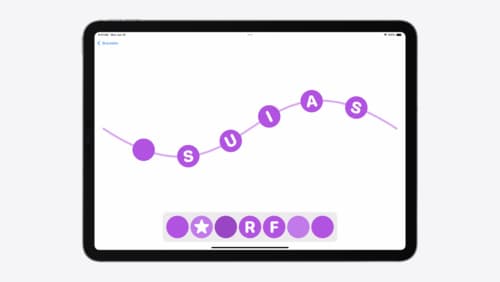animations and stuff
Asked on 2025-06-16
1 search
Apple's WWDC sessions cover a variety of topics related to animations and transitions across different platforms and tools. Here are some highlights from the sessions:
-
Enhance your UI animations and transitions: This session discusses the use of SwiftUI animations to animate UIKit and AppKit views, emphasizing the importance of maintaining continuous velocity for smoother animations. It also covers zoom transitions and gesture-driven animations. For more details, you can check the chapter on Gesture-driven animations.
-
What’s new in Safari and WebKit: This session introduces scroll-driven animations and cross-document view transitions using CSS, which enhance web experiences by linking animations to user behavior without relying on JavaScript. The session also discusses accessibility considerations for animations. You can explore more in the Animation chapter.
-
What’s new in SF Symbols 6: This session introduces new animation presets like wiggle, rotate, and breathe, which can be used to create expressive animations in app interfaces. The session also provides guidance on using the SF Symbols app to animate custom symbols. For more information, see the Animation presets chapter.
-
Bring your SceneKit project to RealityKit: This session covers the transition from SceneKit to RealityKit, focusing on animations and how to play them back on entities. It also discusses the use of lighting and audio to enhance the realism of scenes. The Animations chapter provides more insights.
-
Compose interactive 3D content in Reality Composer Pro: This session explains how to use the built-in Actions API to create and sequence animations in Reality Composer Pro, allowing for real-time animation actions similar to cutscenes in games. The Animation actions chapter is particularly relevant.
These sessions provide a comprehensive overview of the latest advancements in animations across Apple's platforms, offering developers new tools and techniques to enhance user experiences.

Enhance your UI animations and transitions
Explore how to adopt the zoom transition in navigation and presentations to increase the sense of continuity in your app, and learn how to animate UIKit views with SwiftUI animations to make it easier to build animations that feel continuous.

What’s new in Safari and WebKit
Learn how the latest web technologies in Safari and WebKit can help you create incredible experiences. We’ll highlight different CSS features and how they work, including scroll driven animation, cross document view transitions, and anchor positioning. We’ll also explore new media support across audio, video, images, and icons.

What’s new in SF Symbols 6
Explore the latest updates to SF Symbols, Apple’s library of iconography designed to integrate seamlessly with San Francisco, the system font for all Apple platforms. Learn how the new Wiggle, Rotate, and Breathe animation presets can bring vitality to your interface. To get the most out of this session, we recommend first watching “What’s new in SF Symbols 5” from WWDC23.
